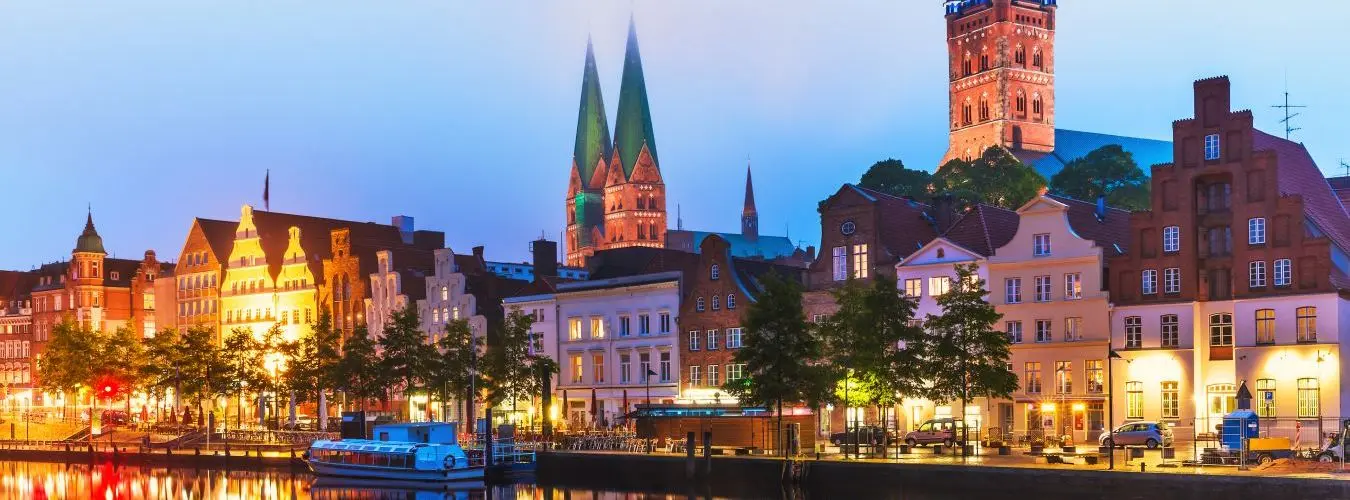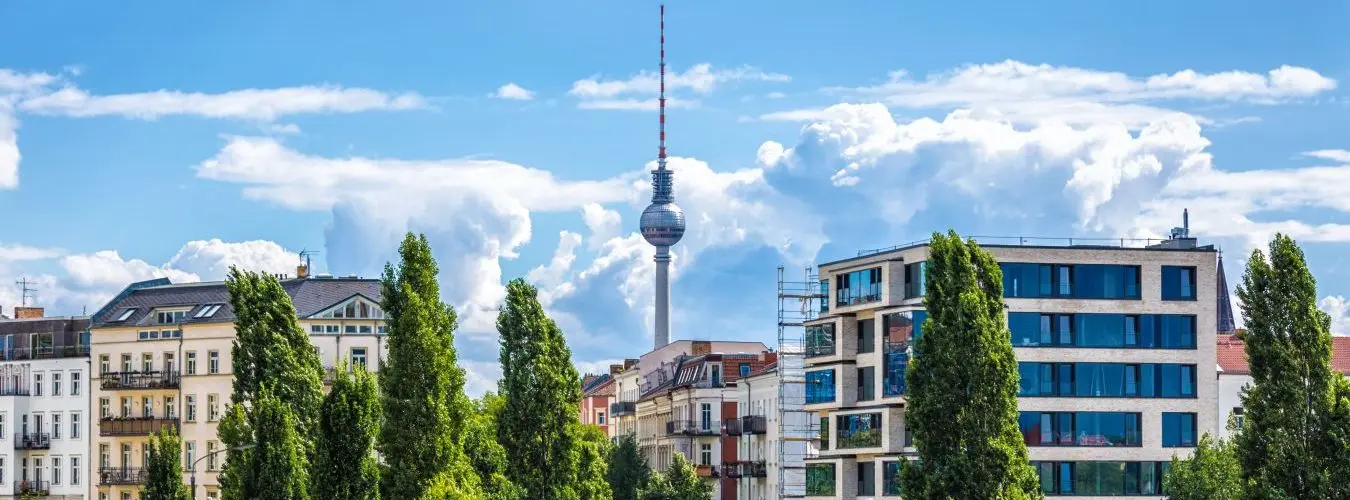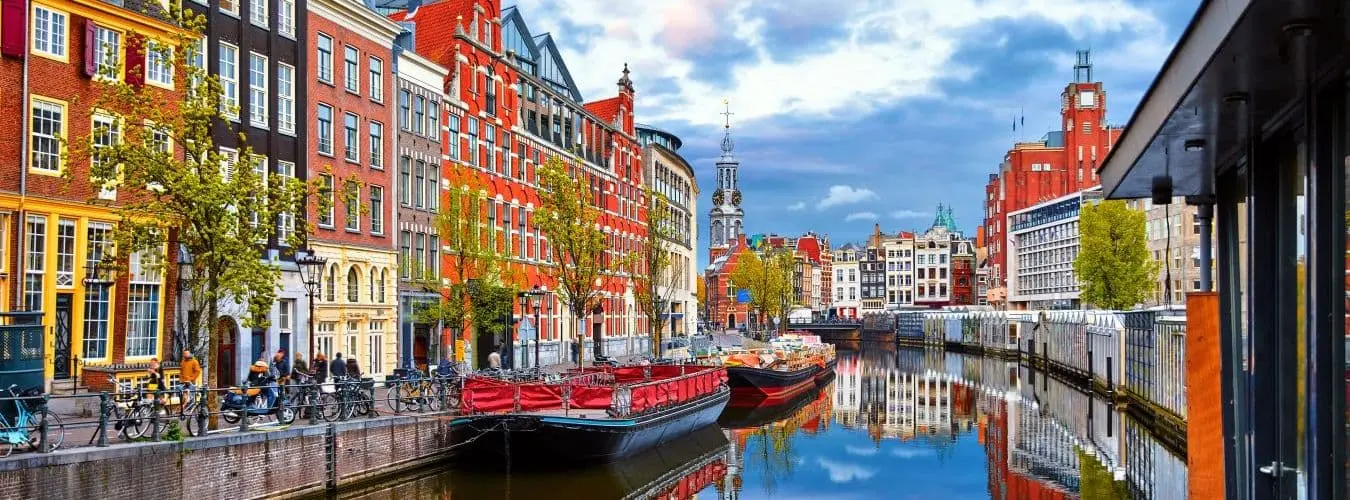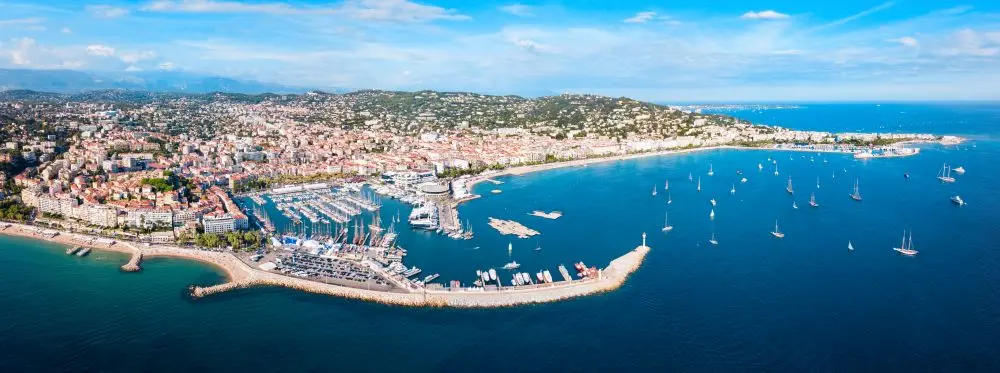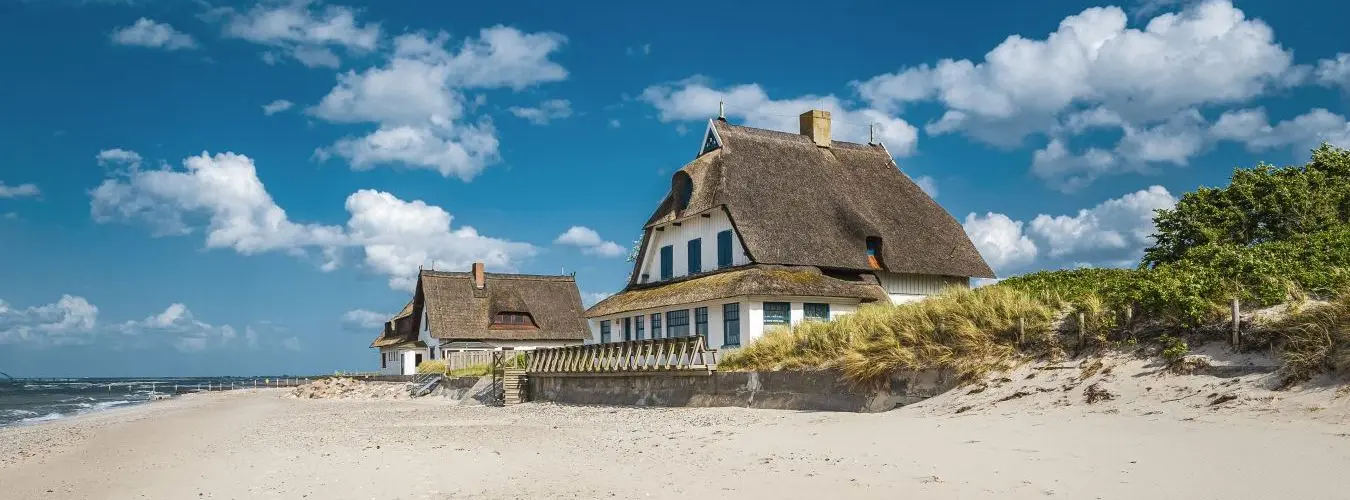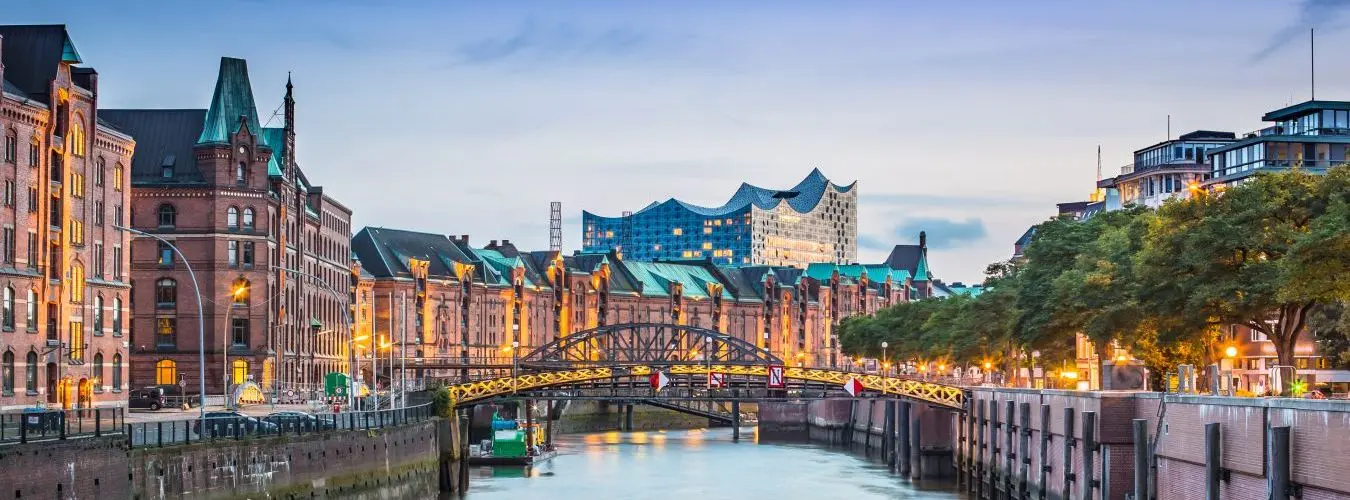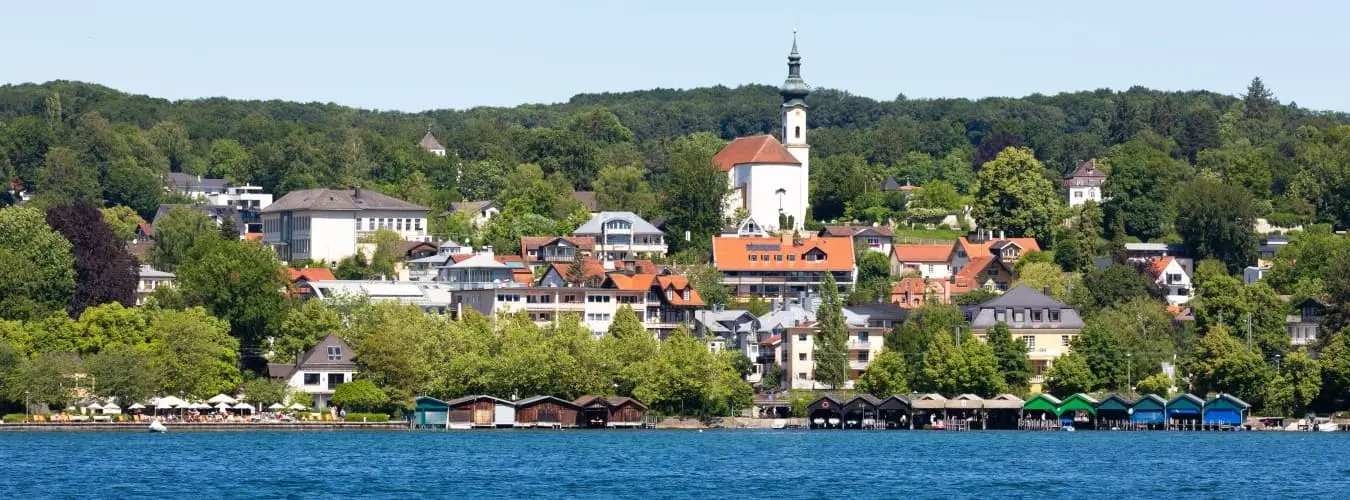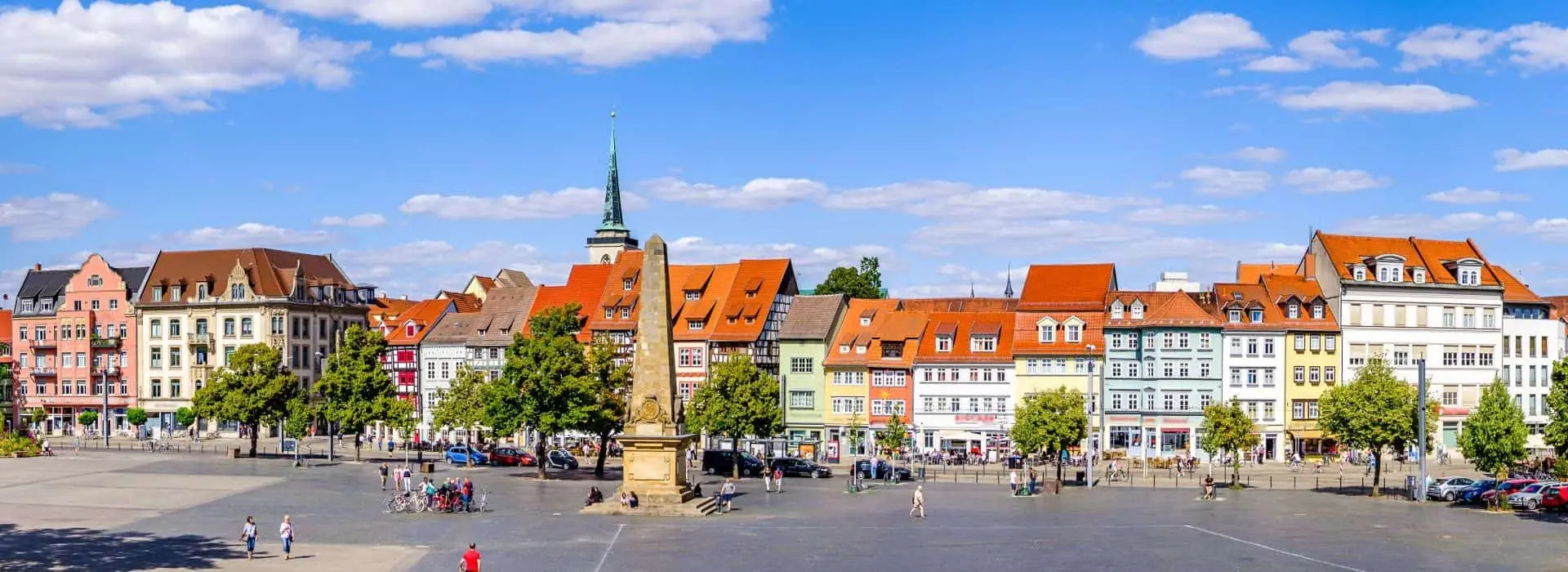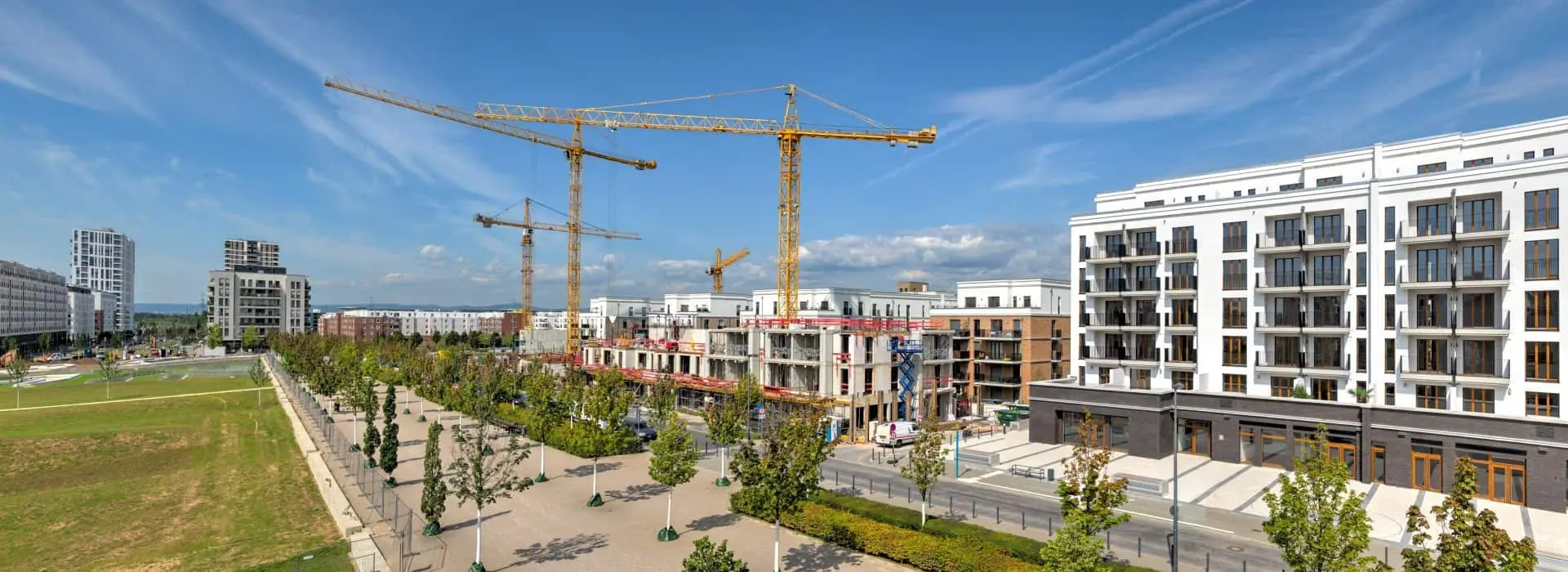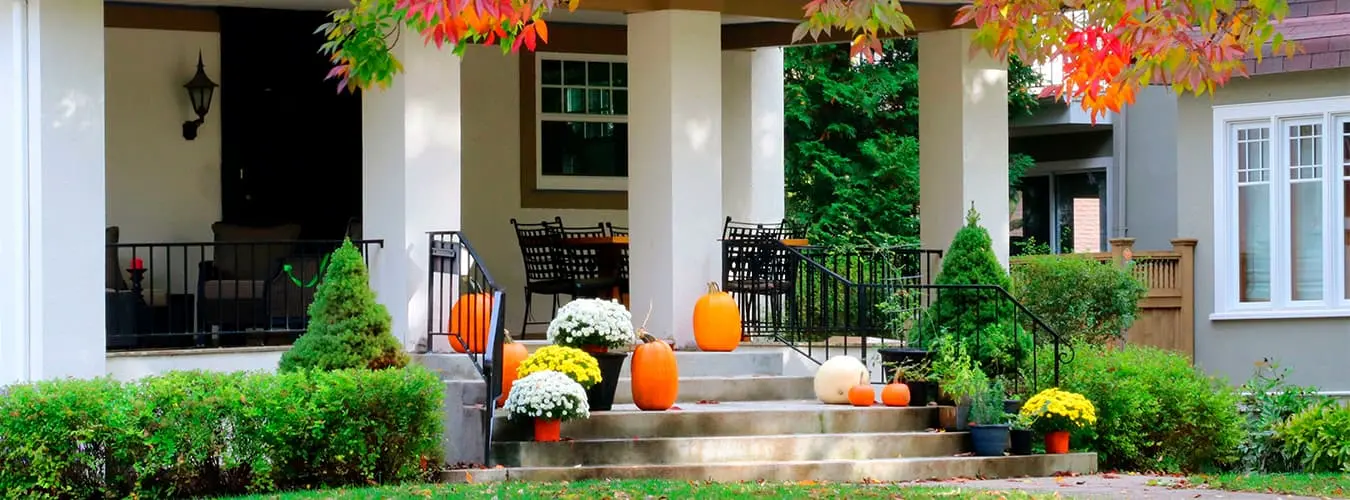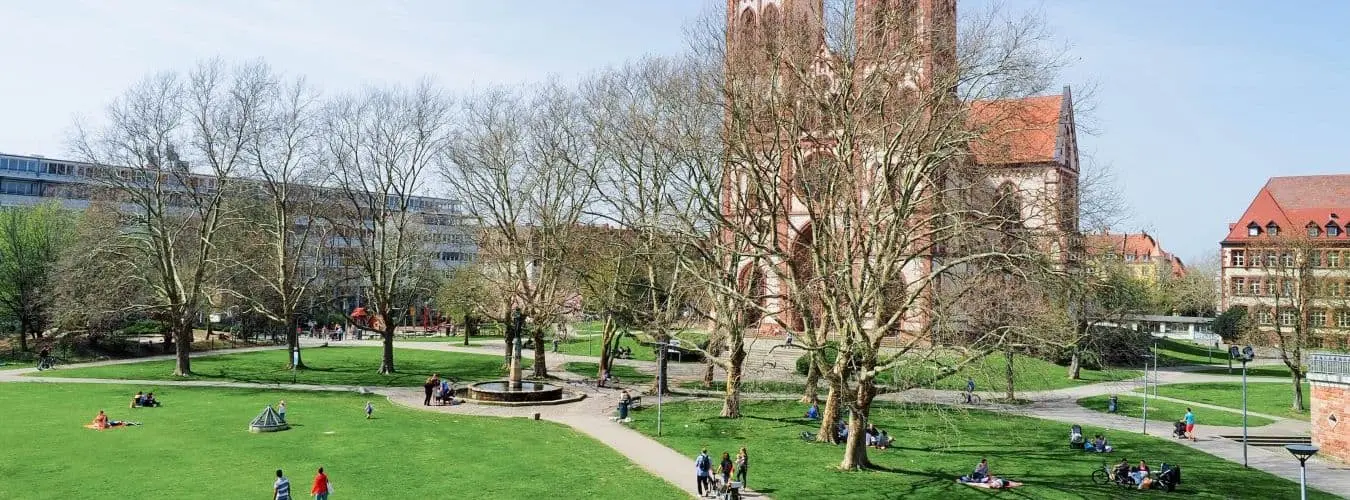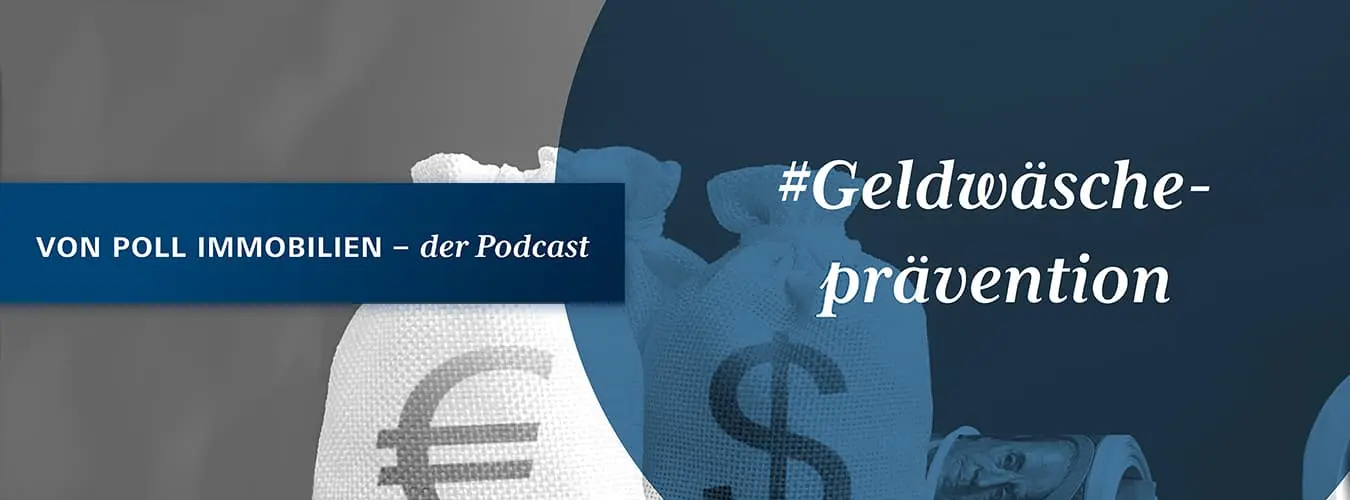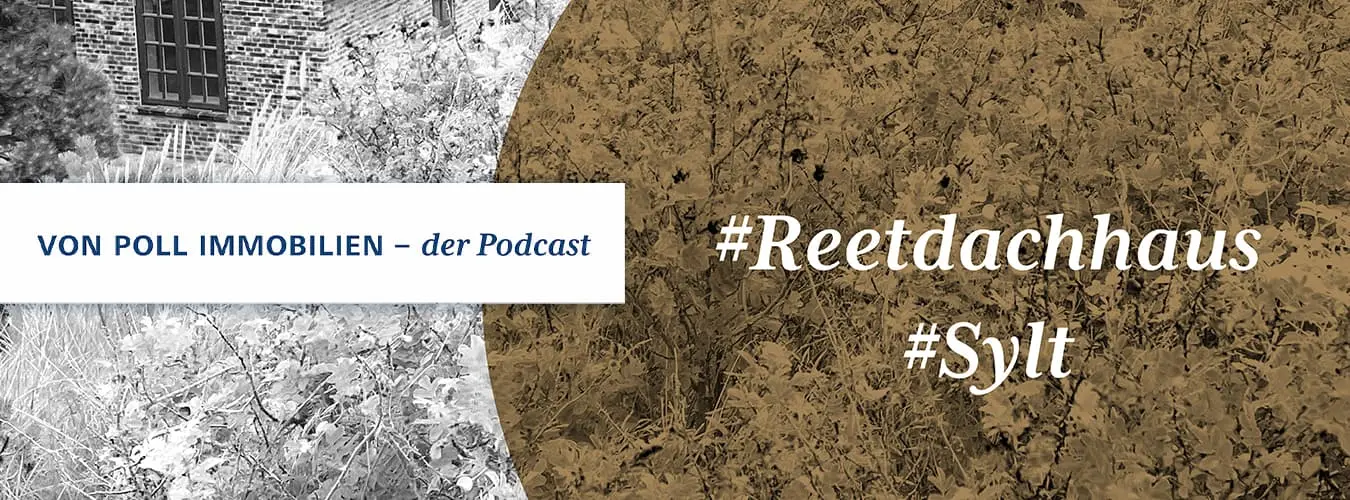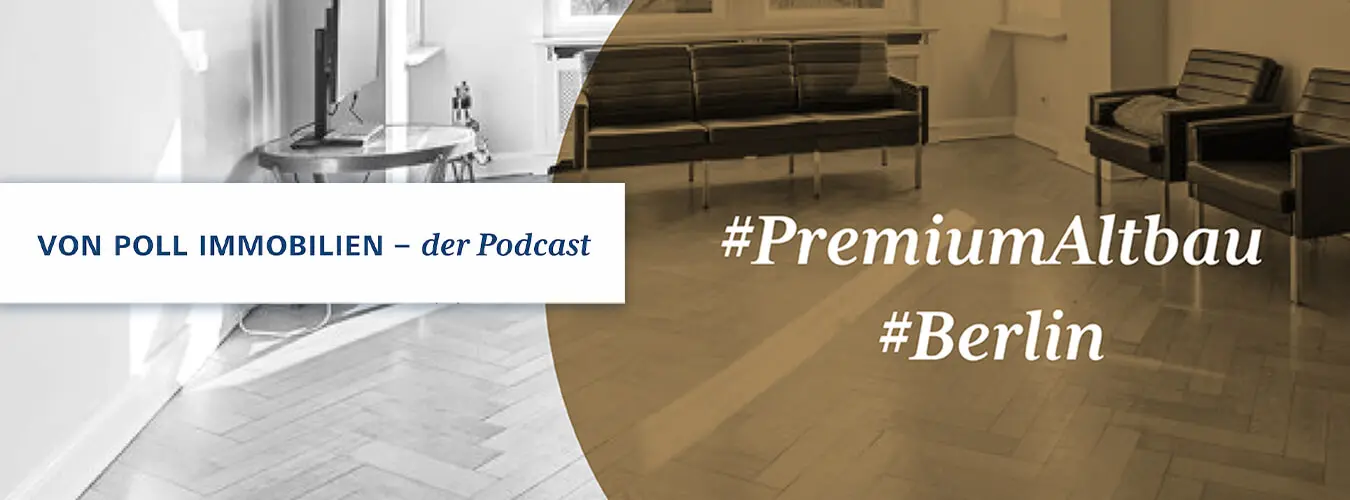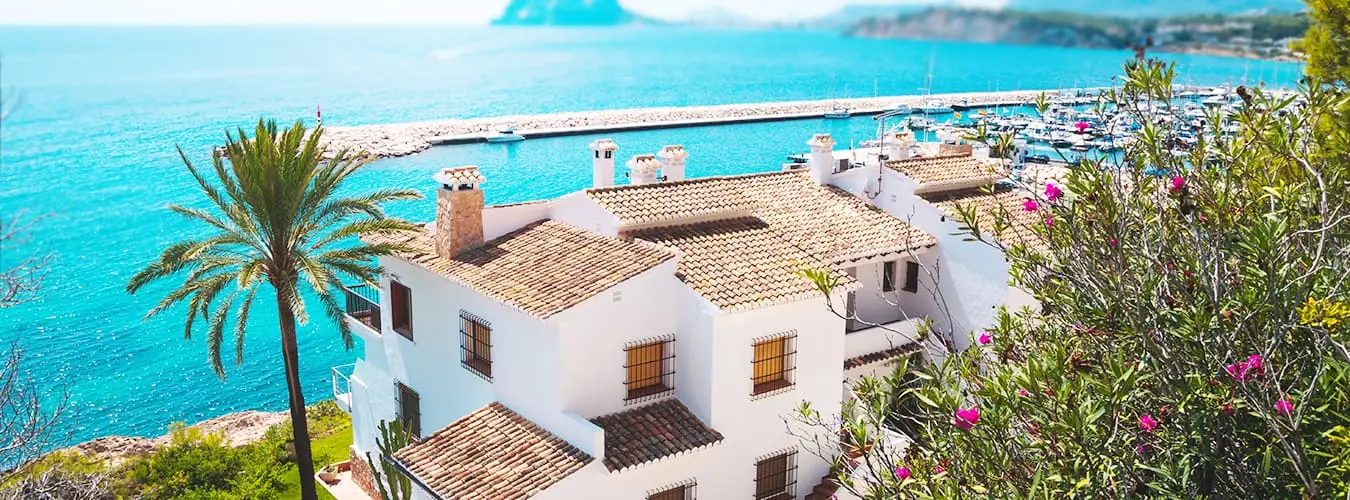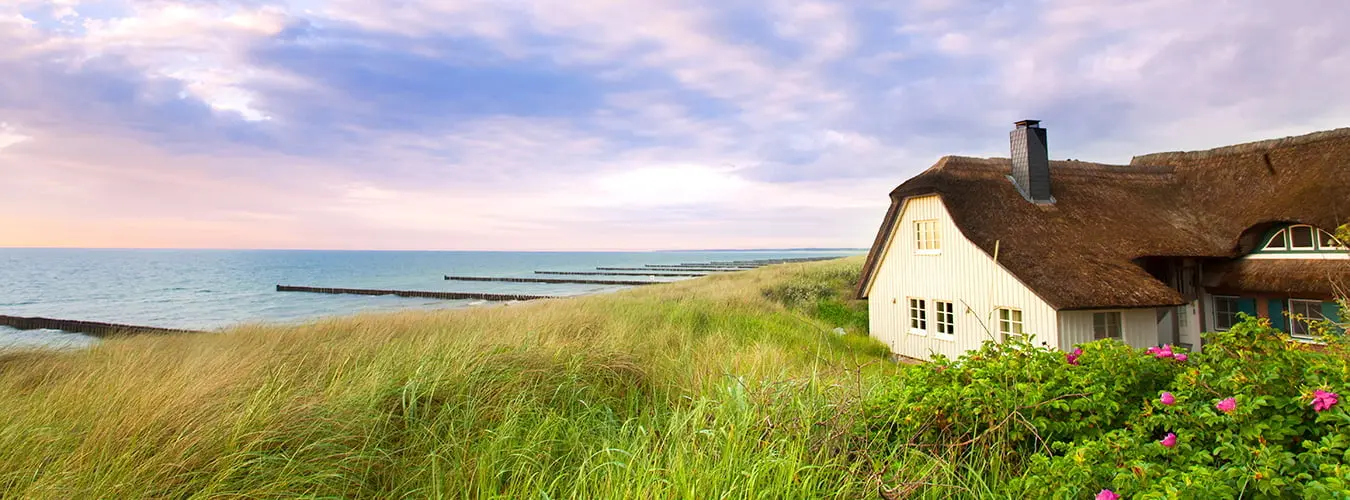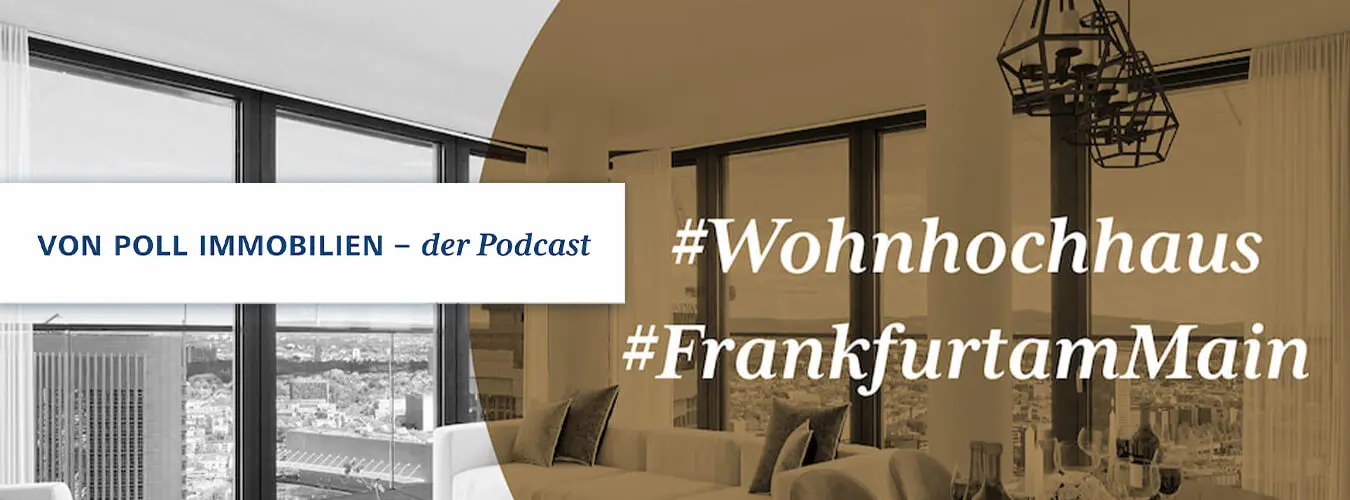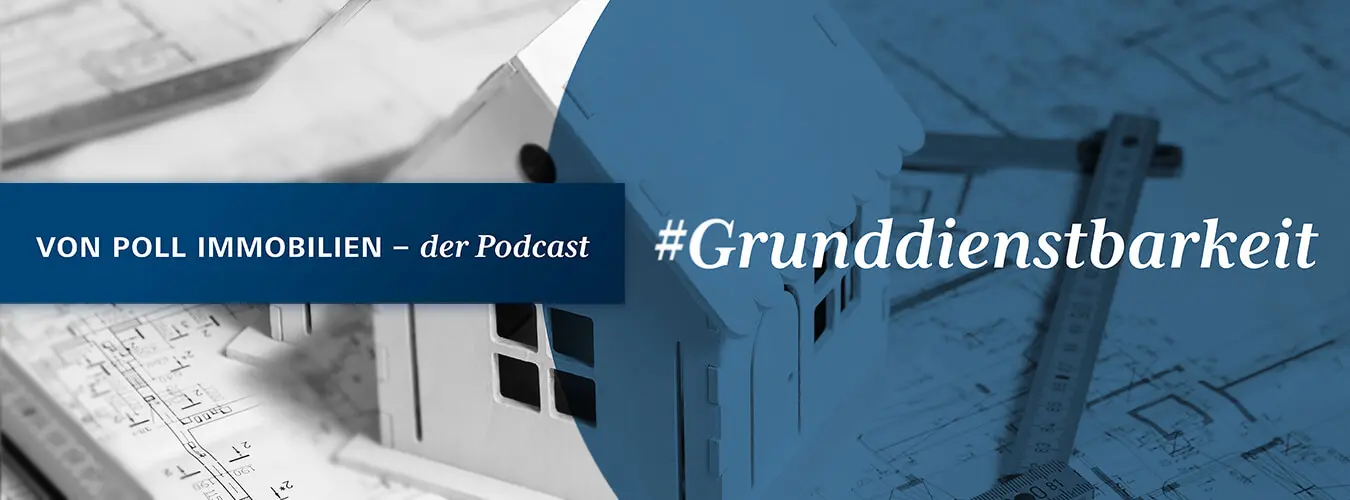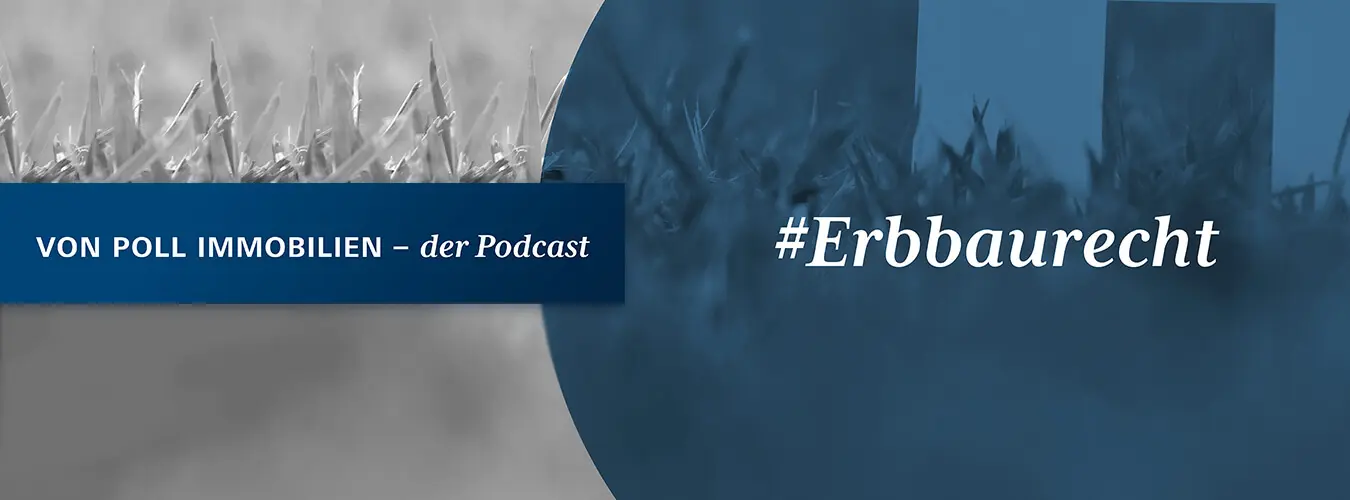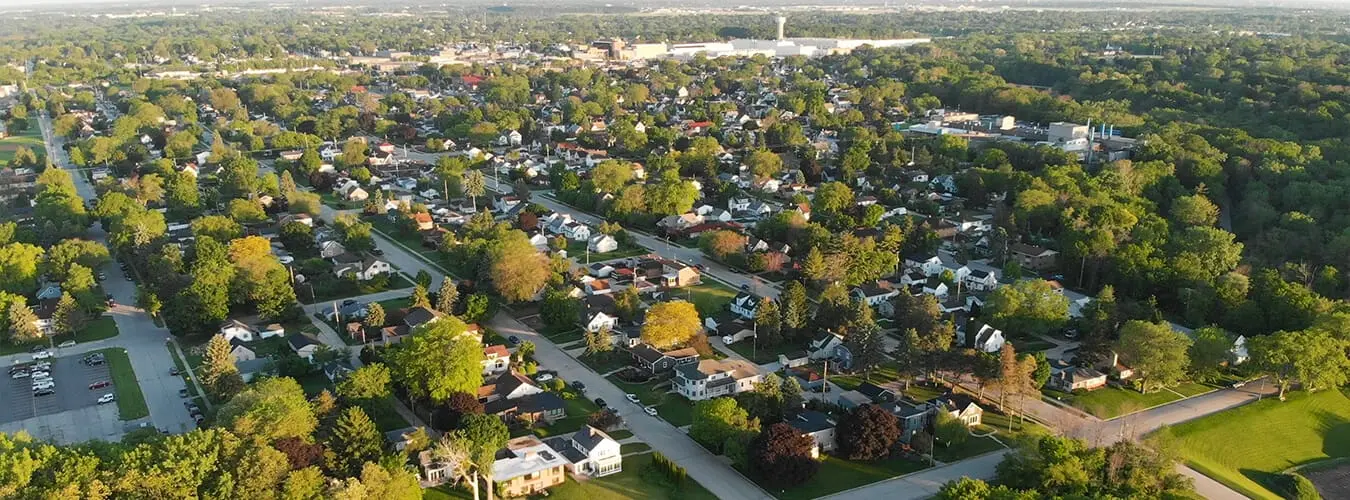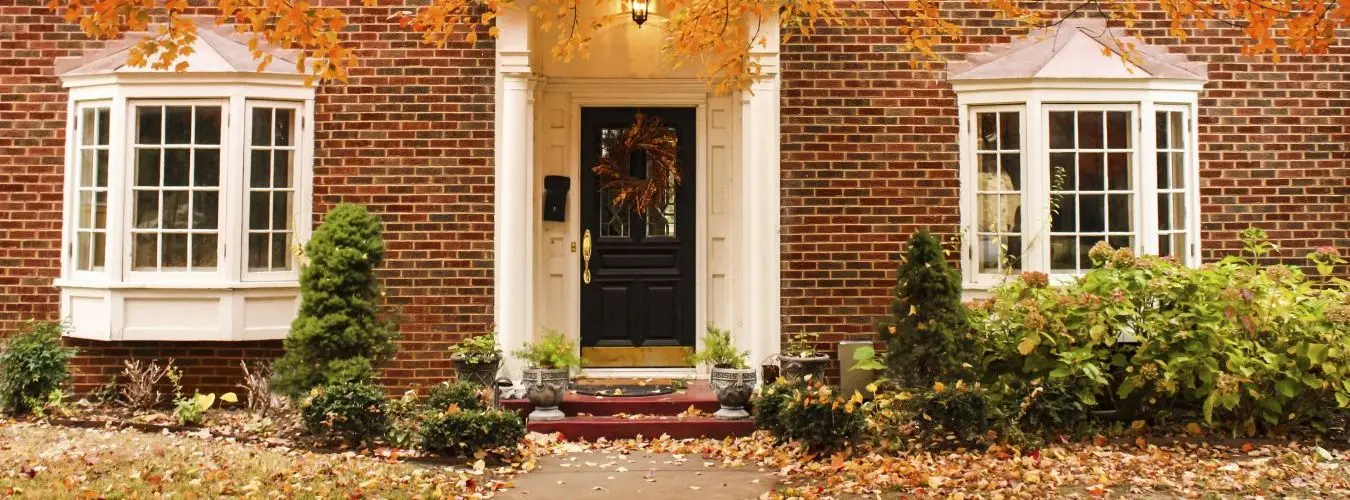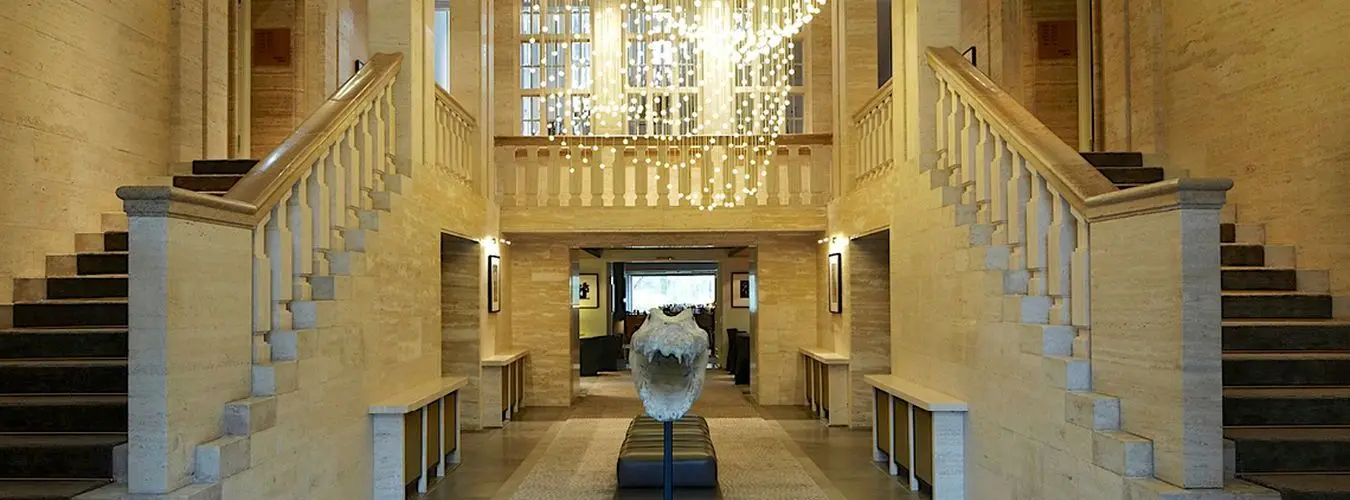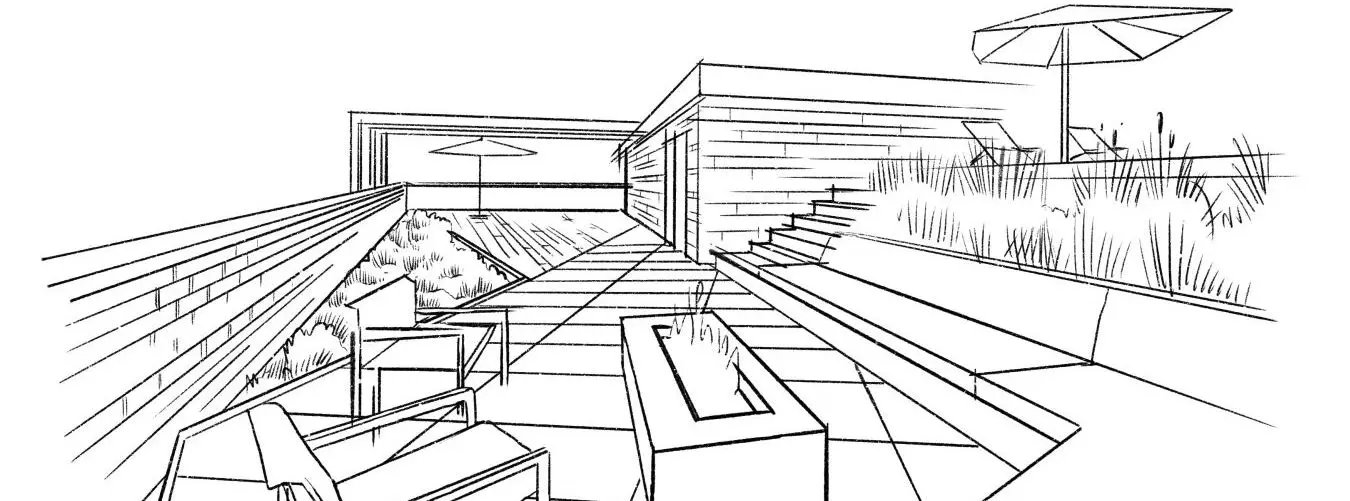CONTENTS ON THIS PAGE:
- 1. Rewarding investment: C-cities still hold great potential for private investors
- 2. Interactive graphic: Real estate analysis of condominiums in C-cities
- 3. Comparison of A-locations in terms of purchase price factor: only Stuttgart still records an indicator below 30
- 4. Comparison of C and B locations: purchase price factor for condominiums in Rostock (C city) twice as high as in Duisburg (B city)
- 5. Comparison of purchase price trends for houses within C-cities in Germany: Houses in Heidelberg almost three times more expensive than in Saarbrücken
1. Worthwhile investment: C-cities still hold great potential for private investors
Property is considered a stable and safe investment with high inflation protection, even in times of crisis. Rented free-hold apartments are attractive thereby. But with real estate prices in major German cities continuing to rise, where can investors still find suitable investment opportunities? VON POLL IMMOBILIEN experts have compared the average purchase and rental prices¹ for condominiums in Germany's C-cities² as well as their development for the years 2020, 2019 and 2010 and determined and compared the purchase price factor³. A good orientation for private investors in the search for a new value investment.
MAIN FACTS AT A GLANCE
- Seven of the 22 C-locations analyzed have purchase price factors between 20 and 25 - another eight cities are between 26 and 30
- In Rostock, the leader of the ranking, the purchase price factor of 40.7 is twice as high as in Wuppertal (20.5), where an investment is currently the most attractive in a comparison of the C-cities
- In a ten-year comparison, the level of the purchase price indicator in Braunschweig increased by 81,8 percent, followed by Kiel with 74.3 percent
- From 2019 to 2020, the purchase price factor in Osnabrück developed with 22,3 percent, the highest upward trend - followed by Rostock with an increase of 18 percent
For a long time, a purchase price factor of 20 was considered a benchmark for a very profitable real estate investment. That is, investors have the purchase price by the rental income generated after 20 years again balanced. In the meantime, however, the benchmark has shifted. In most German regions, a purchase price factor of 25 is now considered a common value, and multipliers of 30 are no longer uncommon. Especially in major cities and metropolitan areas, the purchase price factors often exceed this threshold many times over.
 Daniel Ritter, managing partner at VON POLL IMMOBILIEN:"The purchase price-rent gap continues to widen. Purchase price factors between 15 and 19, as they still existed ten years ago, are very rare today even in German C-cities. Nevertheless, there are some very interesting locations, such as Saarbrücken, Magdeburg or Wuppertal, where investors find attractive investment options."
Daniel Ritter, managing partner at VON POLL IMMOBILIEN:"The purchase price-rent gap continues to widen. Purchase price factors between 15 and 19, as they still existed ten years ago, are very rare today even in German C-cities. Nevertheless, there are some very interesting locations, such as Saarbrücken, Magdeburg or Wuppertal, where investors find attractive investment options."A total of seven of the 22 locations analyzed have a purchase price factor for condominiums between 20 and 25. In Wuppertal (purchase price 1,648 €/m2), the tail end of the ranking, an investment is currently the most attractive. Property buyers there have to factor in an average of 20.5 annual cold rents. This is closely followed by Magdeburg (purchase price 1,545 €/m2) with a multiplier of 21, Saarbrücken (purchase price 1,978 €/m2) with 21.8 and Mönchengladbach (purchase price 1,858 €/m2) with 21.9.
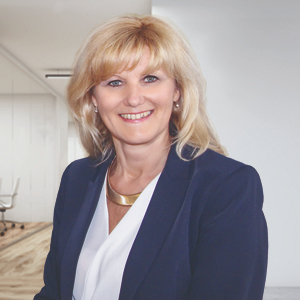 Heike Hoffmann, branch manager of the VON POLL IMMOBILIEN store in Magdeburg:"Magdeburg is not only the state capital of Saxony-Anhalt, but also a popular university city at the same time. This, as well as the positive development of the city, but also the good infrastructure through the connection to the A2 and A14 freeways make Magdeburg attractive for investors. We notice that especially in the shortened marketing period."
Heike Hoffmann, branch manager of the VON POLL IMMOBILIEN store in Magdeburg:"Magdeburg is not only the state capital of Saxony-Anhalt, but also a popular university city at the same time. This, as well as the positive development of the city, but also the good infrastructure through the connection to the A2 and A14 freeways make Magdeburg attractive for investors. We notice that especially in the shortened marketing period."But also in Mülheim an der Ruhr (purchase price 2,085 €/m2), Bielefeld (purchase price 2,291 €/m2) and Erfurt (purchase price 2.267 €/m2), interested parties can still find purchase price factors between 23.7 and 25.1.
Slightly above the ideal purchase price factor range are eight C-cities, where investors have to calculate with indicators between 26 and 30. Among them are the Rhineland-Palatinate capital Mainz (purchase price 3,746 €/m2) with 26.5, Aachen (purchase price 3,027 €/m2) with 27.6, Osnabrück (purchase price 2.867 €/m2) and Braunschweig (purchase price 2,868 €/m2) with 28.6 and Kiel (purchase price 2,987 €/m2) with 29.1. At the threshold of 30 annual cold rents are the locations Offenbach am Main (purchase price 4,000 €/m2), Heidelberg (purchase price 4,390 €/m2) and Darmstadt (purchase price 4,188 €/m2) with multipliers between 30 and 30.4.
A look at these purchase price factors and their development over the past ten years is particularly interesting. After all, five cities, -Braunschweig, Kiel, Osnabrück, Mainz and Offenbach am Main, still recorded moderate purchase price indicators between 15 and 20 in 2010.
While the purchase price/rent ratio in Offenbach (Main) and Mainz climbed by 52.1 percent and 53.4 percent, respectively, by 2020, it was already 63.9 percent in Osnabrück and a whopping 74.3 percent in Kiel. However, Braunschweig is the front-runner in a ten-year comparison, with an 81.8 percent increase and thus the highest purchase price factor development among the C-cities. In 2010, Braunschweig recorded the second-lowest purchase price indicator among the C-locations - after Mönchengladbach - at 15.7.
The development of the purchase price factors from 2019 to 2020, however, presents a different picture. In this period, the multiplier climbed the most in three other C cities. In Magdeburg, the purchase price factor rose by 14.2 percent, in Rostock by 18 percent and in Osnabrück by 22.3 percent. By contrast, the lowest increases were in Mülheim an der Ruhr at 0.7 percent and Lübeck at 0.4 percent. In Erlangen, the multiplier even fell by 4.2 percent.
 Frank Streeck, branch manager of VON POLL IMMOBILIEN Shops in Rostock and Warnemünde:"Since the beginning of the pandemic, we have seen a strong influx in Rostock and the surrounding area from other German regions. This allowed the already existing excess demand for condominiums to grow further. This constellation is clearly reflected in the price trend. For the coming years, we expect renewed increases in value in this segment, but not to the same extent as in the past two years."In general, the level of purchase price indicators ten years ago was very different from today's level: at that time, Rostock was the only C-city with a multiplier of 26, which was above the 25 mark. A total of eleven of the regions analyzed settled between 15.2 (Mönchengladbach) and 19.7 (Offenbach am Main). The multipliers in the remaining ten locations ranged between 20 (Bielefeld) and 24.8 (Regensburg) in 2010. This also includes a total of four cities that call up by far the highest purchase price factors in 2020, such as Lübeck with 20.2 (in 2010), Erlangen with 20.9 (in 2010) and Augsburg and Freiburg with 21.7 each (in 2010).In 2020, Erlangen (purchase price 4.135 €/m2) with 31.6 only just above the 30 mark, while the purchase price indicators in Freiburg (purchase price 5,138 €/m2), Augsburg (purchase price 4,397 €/m2) as well as Lübeck (purchase price 3,578 €/m2) already ranked between 33.7 and 33.9.
Frank Streeck, branch manager of VON POLL IMMOBILIEN Shops in Rostock and Warnemünde:"Since the beginning of the pandemic, we have seen a strong influx in Rostock and the surrounding area from other German regions. This allowed the already existing excess demand for condominiums to grow further. This constellation is clearly reflected in the price trend. For the coming years, we expect renewed increases in value in this segment, but not to the same extent as in the past two years."In general, the level of purchase price indicators ten years ago was very different from today's level: at that time, Rostock was the only C-city with a multiplier of 26, which was above the 25 mark. A total of eleven of the regions analyzed settled between 15.2 (Mönchengladbach) and 19.7 (Offenbach am Main). The multipliers in the remaining ten locations ranged between 20 (Bielefeld) and 24.8 (Regensburg) in 2010. This also includes a total of four cities that call up by far the highest purchase price factors in 2020, such as Lübeck with 20.2 (in 2010), Erlangen with 20.9 (in 2010) and Augsburg and Freiburg with 21.7 each (in 2010).In 2020, Erlangen (purchase price 4.135 €/m2) with 31.6 only just above the 30 mark, while the purchase price indicators in Freiburg (purchase price 5,138 €/m2), Augsburg (purchase price 4,397 €/m2) as well as Lübeck (purchase price 3,578 €/m2) already ranked between 33.7 and 33.9. Thorsten Claus, Branch Manager of VON POLL IMMOBILIEN Shops in Lübeck and Bad Schwartau:"The demand for condominiums as investment properties in Lübeck continues to be high. The Lübeck region is also perceived as very attractive by many investors from Hamburg and the surrounding area due to its proximity to the metropolis of Hamburg. We register particularly from this area more and more inquiries."
Thorsten Claus, Branch Manager of VON POLL IMMOBILIEN Shops in Lübeck and Bad Schwartau:"The demand for condominiums as investment properties in Lübeck continues to be high. The Lübeck region is also perceived as very attractive by many investors from Hamburg and the surrounding area due to its proximity to the metropolis of Hamburg. We register particularly from this area more and more inquiries."That is followed with some distance by the cities of Regensburg (purchase price 4,868 € / m²) with 35.7 and Potsdam (purchase price 4,481 € / m²) with 36.8. The undisputed leader of the purchase price factor ranking is Rostock (purchase price 3,484 €/m²). There, investors have to dig deepest into their pockets with 40.7 annual rents.
 Daniel Ritter, managing partner at VON POLL IMMOBILIEN:"Even if the purchase price factors in these regions have exceeded the former indicators, sometimes significantly, private investors should not be deterred in any way. On the contrary - the calculation of the ratio of purchase price to rent always represents only the status quo. In order to classify an investment as profitable, many focus mainly on the achievable rental yield. Nevertheless, interested parties should also keep an eye on the future development potential of the respective location. In particular, the micro-locations can change rapidly in certain districts and contribute greatly to their upgrading as well as to the increase in value of the property.
Daniel Ritter, managing partner at VON POLL IMMOBILIEN:"Even if the purchase price factors in these regions have exceeded the former indicators, sometimes significantly, private investors should not be deterred in any way. On the contrary - the calculation of the ratio of purchase price to rent always represents only the status quo. In order to classify an investment as profitable, many focus mainly on the achievable rental yield. Nevertheless, interested parties should also keep an eye on the future development potential of the respective location. In particular, the micro-locations can change rapidly in certain districts and contribute greatly to their upgrading as well as to the increase in value of the property.
Info about the interactive graphic
All details about the price development per C-city are displayed in the Germany map via mouseover. Using the selection tools from the tool box, top left of the map, multiple C-cities can be selected and compared. The other charts adjust accordingly. In addition, A and B cities can be added next to the map.
3. Comparison of the A-locations with regard to the purchase price factor:
Only Stuttgart still records an indicator below 30
In addition to the consideration of the C-cities, a comparative look at the average purchase price factors of the surrounding metropolises, the so-called seven A-cities, is worthwhile for investors. The VON POLL IMMOBILIEN experts count, due to the strong market development, since 2021 also Leipzig to the A-categorization by BulwienGesa. As expected, the majority of purchase price factors for the defined A locations, Berlin, Munich, Hamburg, Frankfurt am Main, Düsseldorf, Stuttgart, Cologne and Leipzig, were above the 30 threshold in 2020. Only in Stuttgart (purchase price 4,868 €/m²) can private investors still find condominiums at an average indicator of 29.5. This is followed by Cologne (purchase price 4,309 €/m²) with 30.4, Leipzig (purchase price 2,707 €/m²) with 31.5 and Düsseldorf (purchase price 4,354 €/m²) with 33. In Frankfurt am Main (purchase price 6.351 €/m²) it takes an average of 37.6 annual cold rents until an investment is recovered, in Hamburg (purchase price 5,549 €/m²) 38.7 and in the Bavarian capital Munich (purchase price 8,596 €/m²) even 39. The German capital Berlin (purchase price 5,000 €/m²) even exceeded the 40 mark with 41.8.4. Comparison of C and B locations with regard to the purchase price factor:
Purchase price factor for condominiums in Rostock (C city) twice as high as in Duisburg (B city)
A comparison of the average purchase price factors for condominiums within the C and B cities makes it clear: In smaller C cities, prospective buyers for property in many places have to dig deeper into their pockets than in the major cities in the B segment. This is also reflected in the purchase price factors. The first three places are exclusively occupied by C cities. Investors in the city of Rostock (purchase price 3,484 €/m²) must expect by far the highest purchase price factor of 40.7. Afterwards Potsdam (purchase price 4.481 €/m ²) with a multiplier of 36,8 and Regensburg (purchase price 4.868 €/m2) with 35,7.Place four divide the C-town Luebeck (purchase price 3.578 €/m ²) and B-town Münster (purchase price 4.235 €/m ²). Both have an average purchase price factor of 33.9 and are therefore below the 35 threshold. This is followed by the C locations of Augsburg (purchase price 4,397 €/m²) and Freiburg (purchase price 5,138 €/m²) and the B city of Wiesbaden (purchase price 4,254 €/m²). The indicators there settle between 33.8 and 33.1. A look at Erlangen and Nuremberg is also interesting: Erlangen, as a C-location, ranks minimally ahead of the B-city Nuremberg with 31.3 in terms of the purchase price factor. Erlangen also leads in terms of average purchase prices in 2020 (purchase price €4,135/m²). Here investors must expect almost 400 euros more for a square meter of living space than in Nuremberg (purchase price 3,750 € / m²). Daniel Ritter, managing partner at VON POLL IMMOBILIEN:"Those unfamiliar with the area might initially be surprised that the purchase price factor and price per square meter in Erlangen is higher than in Nuremberg - after all, Nuremberg is the second-largest city in Bavaria and only about 20 minutes by car from Erlangen. At the same time, the figures here confirm a continuing trend, also due to the influences of the pandemic, that more and more people want a life away from the larger cities and metropolises. "Erlangen is almost five times smaller than Nuremberg in terms of population. There, prospective buyers will find not only more open space and nature, but above all less hustle and bustle - but at the same time are very well connected and quickly in the big city."After all, 13 of 35 analyzed C and B cities call a purchase price indicator between 26 and 30. Four of them are close to exceeding the 30 mark with indicators between 30.5 and 30.3. These include the B cities of Dresden (purchase price 2,857 €/m²) and Karlsruhe (purchase price 3,864 €/m²) as well as the C locations of Darmstadt (purchase price 4,188 €/m²) and Heidelberg (purchase price 4,390 €/m²). A similar picture to Erlangen and Nuremberg is also presented by the comparison between C-city Heidelberg and B-city Mannheim, which are only just under half an hour apart. Investors have redeemed their investment in a condominium in Mannheim with a factor of 29.2 on average one year earlier than in Heidelberg. A square meter of living space is also around €900 cheaper in Mannheim (purchase price €3,500/m²) than in Heidelberg. The C-cities Aachen (purchase price 3,027 €/m²) and Mainz (purchase price 3,746 €/m²) as well as the B-city Bonn (purchase price 3,300 €/m²) rank themselves with multipliers between 27.6 and 26.3 in the lower part of the purchase price factor ranking.
Daniel Ritter, managing partner at VON POLL IMMOBILIEN:"Those unfamiliar with the area might initially be surprised that the purchase price factor and price per square meter in Erlangen is higher than in Nuremberg - after all, Nuremberg is the second-largest city in Bavaria and only about 20 minutes by car from Erlangen. At the same time, the figures here confirm a continuing trend, also due to the influences of the pandemic, that more and more people want a life away from the larger cities and metropolises. "Erlangen is almost five times smaller than Nuremberg in terms of population. There, prospective buyers will find not only more open space and nature, but above all less hustle and bustle - but at the same time are very well connected and quickly in the big city."After all, 13 of 35 analyzed C and B cities call a purchase price indicator between 26 and 30. Four of them are close to exceeding the 30 mark with indicators between 30.5 and 30.3. These include the B cities of Dresden (purchase price 2,857 €/m²) and Karlsruhe (purchase price 3,864 €/m²) as well as the C locations of Darmstadt (purchase price 4,188 €/m²) and Heidelberg (purchase price 4,390 €/m²). A similar picture to Erlangen and Nuremberg is also presented by the comparison between C-city Heidelberg and B-city Mannheim, which are only just under half an hour apart. Investors have redeemed their investment in a condominium in Mannheim with a factor of 29.2 on average one year earlier than in Heidelberg. A square meter of living space is also around €900 cheaper in Mannheim (purchase price €3,500/m²) than in Heidelberg. The C-cities Aachen (purchase price 3,027 €/m²) and Mainz (purchase price 3,746 €/m²) as well as the B-city Bonn (purchase price 3,300 €/m²) rank themselves with multipliers between 27.6 and 26.3 in the lower part of the purchase price factor ranking.Further twelve cities show purchase price indicators between 20 and 25. In six of them, investors even find purchase price factors between 20 and 21, including the B location Bochum (purchase price 1,878 €/m2) with 21.8. Investors expect the most profitable multipliers in Wuppertal (purchase price 1.648 €/m2), a C-location, with 20.5 and Duisburg (purchase price 1,553 €/m2), a B-location, with 20.2. Also noteworthy is the large difference between Duisburg and the C-city of Mülheim an der Ruhr, not far away (purchase price 2,085 €/m2). In Duisburg as a B-location, property buyers need 3.5 annual cold rents less than in Mülheim an der Ruhr to recoup the invested expenditure. The square meter also costs about 530 euros more in Mühlheim an der Ruhr.
5. Comparison of purchase price trends for houses within C-cities in Germany
Houses in Heidelberg almost three times more expensive than in Saarbrücken
With an average price of 704,000 euros, Heidelberg leads the purchase price ranking of detached and semi-detached houses in 2020, closely followed by Potsdam with a purchase price of 699,000 euros. Compared with the same period last year, property buyers in 2020 will pay 2.8 percent more for a house in Heidelberg, and a whopping 18.5 percent more in Potsdam. In a ten-year comparison, the purchase prices in Potsdam - with a price increase of 129.9 percent compared to 2010 - have even more than doubled. Andreas Güthling, Branch Manager at VON POLL IMMOBILIEN in Potsdam:"The demand for residential real estate in Potsdam remains strong, even compared to before the pandemic. Prospective buyers appreciate the proximity to the capital and the high quality of life in the region. Potsdam shines with its cultural diversity, impressive castles and proximity to many lakes and swimming opportunities."An equally high price level awaits prospective buyers in the cities of Erlangen with an average of 692,500 euros for a detached and semi-detached house and a price increase of 6.8 percent compared to 2019, as well as in Freiburg with 675,000 euros and the smallest increase in the entire ranking of 0.7 percent. With some distance, but still in the upper third of the purchase price ranking, follows Regensburg with 610,000 euros and a price increase of 4.3 percent. In the tradition-rich cities of Augsburg and Mainz buyers paid in 2020 in each case 600,000 euro for a house, whereby the prices climbed in the comparison to the previous year period around 8 per cent and/or 0.8 per cent upward.The preislichen center field is led by Offenbach at the Main with 579,000 euro, Darmstadt with 554,000 euro and Aachen with 475,000 euro. While the purchase prices in Offenbach am Main have increased by 9.5 percent compared to 2019, the increase in Darmstadt and Aachen is between 10.1 percent and 10.8 percent. This is followed by the cities of Mühlheim an der Ruhr with 450,000 euros and a price increase of 4.7 percent and Rostock with 420,000 euros and an increase of 5.1 percent. Below the 400,000 euro mark are the cities of Wuppertal and Braunschweig with an average of 399,900 euros and 399,000 euros, respectively. Compared to 2019, prices there have risen moderately by between 5.3 percent and 5.5 percent. A higher price level is also noticeable for prospective buyers in Osnabrück. Here, prices for a detached and semi-detached house climbed by a whopping 15.4 percent to €398,000 in 2020. In addition, the cities Bielefeld with on the average 380,000 euro and a price rise of 8.9 per cent as well as Erfurt with 365,000 euro with an increase of 8.3 per cent in the comparison to the previous year are popular regions for buyers.Interesting is also a view of the coastal region: While in the year 2010 Kiel with 165,000 euro and Luebeck with 173,000 euro were still the tail lights under the C-cities, the purchase prices in these regions doubled themselves up to 2020 more than. Currently, buyers are paying around 350,000 euros for a detached or semi-detached house in Kiel and 345,000 euros in Lübeck. Compared with 2019, Kiel has even recorded the strongest price increase of all the C-cities analyzed, at 18.6 percent, while in Lübeck purchase prices have risen the most, by 16.9 percent. Between the two coastal cities, Mönchengladbach ranks with an average price of 349,000 euros for a house (in 2020). Thus, the real estate priceshere increased by 9.4 percent compared to 2019.
Andreas Güthling, Branch Manager at VON POLL IMMOBILIEN in Potsdam:"The demand for residential real estate in Potsdam remains strong, even compared to before the pandemic. Prospective buyers appreciate the proximity to the capital and the high quality of life in the region. Potsdam shines with its cultural diversity, impressive castles and proximity to many lakes and swimming opportunities."An equally high price level awaits prospective buyers in the cities of Erlangen with an average of 692,500 euros for a detached and semi-detached house and a price increase of 6.8 percent compared to 2019, as well as in Freiburg with 675,000 euros and the smallest increase in the entire ranking of 0.7 percent. With some distance, but still in the upper third of the purchase price ranking, follows Regensburg with 610,000 euros and a price increase of 4.3 percent. In the tradition-rich cities of Augsburg and Mainz buyers paid in 2020 in each case 600,000 euro for a house, whereby the prices climbed in the comparison to the previous year period around 8 per cent and/or 0.8 per cent upward.The preislichen center field is led by Offenbach at the Main with 579,000 euro, Darmstadt with 554,000 euro and Aachen with 475,000 euro. While the purchase prices in Offenbach am Main have increased by 9.5 percent compared to 2019, the increase in Darmstadt and Aachen is between 10.1 percent and 10.8 percent. This is followed by the cities of Mühlheim an der Ruhr with 450,000 euros and a price increase of 4.7 percent and Rostock with 420,000 euros and an increase of 5.1 percent. Below the 400,000 euro mark are the cities of Wuppertal and Braunschweig with an average of 399,900 euros and 399,000 euros, respectively. Compared to 2019, prices there have risen moderately by between 5.3 percent and 5.5 percent. A higher price level is also noticeable for prospective buyers in Osnabrück. Here, prices for a detached and semi-detached house climbed by a whopping 15.4 percent to €398,000 in 2020. In addition, the cities Bielefeld with on the average 380,000 euro and a price rise of 8.9 per cent as well as Erfurt with 365,000 euro with an increase of 8.3 per cent in the comparison to the previous year are popular regions for buyers.Interesting is also a view of the coastal region: While in the year 2010 Kiel with 165,000 euro and Luebeck with 173,000 euro were still the tail lights under the C-cities, the purchase prices in these regions doubled themselves up to 2020 more than. Currently, buyers are paying around 350,000 euros for a detached or semi-detached house in Kiel and 345,000 euros in Lübeck. Compared with 2019, Kiel has even recorded the strongest price increase of all the C-cities analyzed, at 18.6 percent, while in Lübeck purchase prices have risen the most, by 16.9 percent. Between the two coastal cities, Mönchengladbach ranks with an average price of 349,000 euros for a house (in 2020). Thus, the real estate priceshere increased by 9.4 percent compared to 2019. Robert Rothböck, Branch Manager at VON POLL IMMOBILIEN in Kiel:"Both the demand and the supply in the region around Kiel is unabatedly high. The increasing interest in vacationing in our own country currently makes us one of the most popular vacation regions. As a result, we are feeling competition between own and vacation use, which is giving the market an additional boost. Many who have spent their vacations here also want to live in the coastal region in retirement. Kiel's appeal lies, among other things, in the Kiel Fjord, the water sports facilities and the beach. In addition it comes that - in the comparison to the next larger city Hamburg - prospective buyers find here still more moderate prices for one and two-family houses."Under the 300,000 euro border ranked 2020 only two of the analyzed C-cities. Prospective buyers will find a favorable price level for houses in Magdeburg with an average price of 299,980 euros and a price increase of 10.3 percent compared to 2019. Single-family and two-family houses are cheapest in Saarbrücken with an average of 249,375 euros. Compared to 2019, prices here rose by 1.8 percent. This means that houses in Heidelberg, the front-runner among the C-locations in terms of property prices, are almost three times more expensive on average than in Saarbrücken. Also in the ten-year comparison Saarbrücken lies in the lower third of the Rankings, thereby the prices with 27,9 per cent in the comparison to 2010 rose there also at the smallest.
Robert Rothböck, Branch Manager at VON POLL IMMOBILIEN in Kiel:"Both the demand and the supply in the region around Kiel is unabatedly high. The increasing interest in vacationing in our own country currently makes us one of the most popular vacation regions. As a result, we are feeling competition between own and vacation use, which is giving the market an additional boost. Many who have spent their vacations here also want to live in the coastal region in retirement. Kiel's appeal lies, among other things, in the Kiel Fjord, the water sports facilities and the beach. In addition it comes that - in the comparison to the next larger city Hamburg - prospective buyers find here still more moderate prices for one and two-family houses."Under the 300,000 euro border ranked 2020 only two of the analyzed C-cities. Prospective buyers will find a favorable price level for houses in Magdeburg with an average price of 299,980 euros and a price increase of 10.3 percent compared to 2019. Single-family and two-family houses are cheapest in Saarbrücken with an average of 249,375 euros. Compared to 2019, prices here rose by 1.8 percent. This means that houses in Heidelberg, the front-runner among the C-locations in terms of property prices, are almost three times more expensive on average than in Saarbrücken. Also in the ten-year comparison Saarbrücken lies in the lower third of the Rankings, thereby the prices with 27,9 per cent in the comparison to 2010 rose there also at the smallest.
All data and diagrams may be used and published with a reference to the following source: of Poll real estates GmbH.1 The data basis of the purchase price analysis is based on the average asking prices of Empirica Regio for 2020, 2019 and 2010.2As a basis for the categorization of the German real estate market VON POLL IMMOBILIEN uses the classification into A, B, C and D cities by BulwienGesa. For this purpose, the cities were grouped according to their functional importance for the international, national as well as regional or local real estate market. BulwienGesa defines important German cities of regional and limited national significance with an important impact on the surrounding region as C-cities. A-cities include the most important German centers of national and, in some cases, international significance with large, functioning markets in all segments. B-cities include major German cities with national and regional significance.3The purchase price factor - also known as the multiplier - provides information on the profitability of a real estate investment. In its calculation, the purchase price is divided by the annual cold rent. Purchase and ancillary rental costs or future increases in value are not taken into account.
